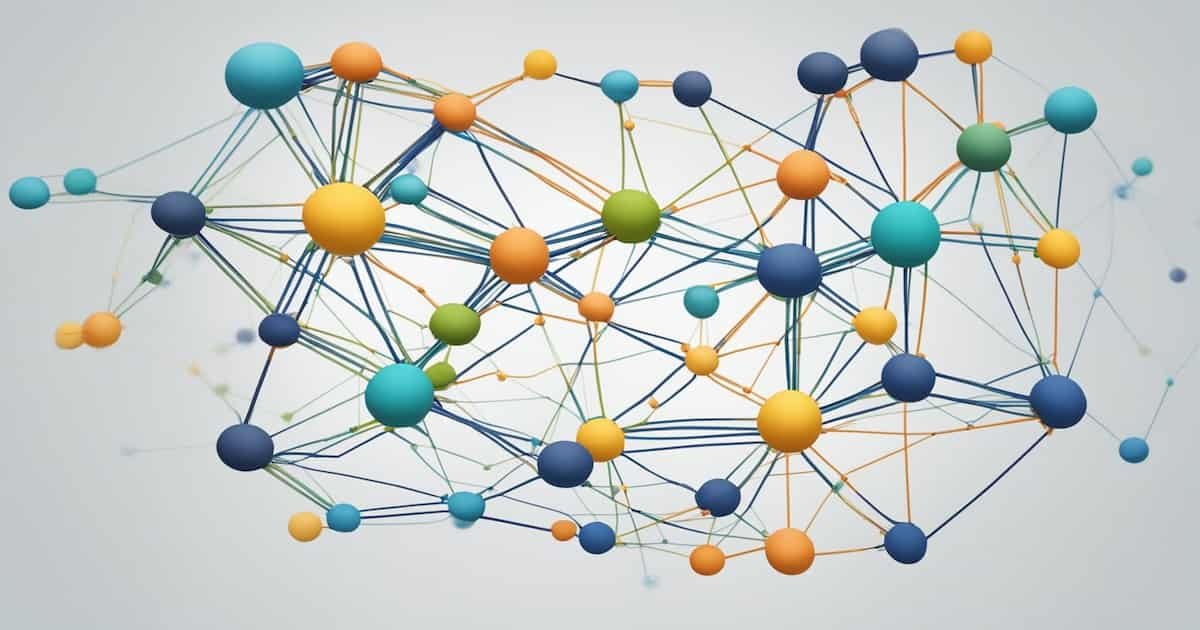
Using spreading activation to influence can significantly impact your ability to shape ideas, memories, and actions. This cognitive theory explains how activating one memory or concept can trigger other related thoughts and behaviors. You can harness this mechanism to enhance learning, marketing strategies, or even personal development.
Spreading activation is not limited to verbal memory; it also applies to nonverbal and visuospatial memory networks. By understanding how these associations work, you can create effective strategies to influence decisions and behavior. Whether you’re a marketer seeking to create lasting brand impressions or an educator aiming to improve retention, this theory offers valuable insights.
Learning to use spreading activation effectively means recognizing the associations that link different concepts. By activating the right “nodes” within these networks, you can guide people towards specific beliefs or actions. Get ready to explore how you can leverage this powerful tool in various fields, and learn real-world applications that showcase its potential.
Key Takeaways
- Spreading activation influences thoughts and behaviors by linking related concepts.
- Both verbal and nonverbal memory networks are affected.
- Applying this theory can enhance learning, marketing, and personal development.
Understanding Spreading Activation
Spreading activation involves the idea that activating one concept in the mind can trigger and spread to related concepts. It is a key theory in understanding how memories and associations work.
A great example is in “The Political Brain” by Drew Westen. The author explores how emotions and cognitive processes influence political behavior and decision-making. One of the concepts he discusses is the activation of mental networks through word associations. This idea is rooted in cognitive psychology, where it’s understood that our brains store information in interconnected networks of related concepts.
When a particular word or idea is presented, it can activate a network of associated thoughts, feelings, and memories. This process is called “spreading activation.” For example, if you hear the word “freedom,” it might activate related concepts such as “independence,” “liberty,” “rights,” “democracy,” and so on. These associations can influence how you think and feel about a topic, often at an unconscious level.
Westen argues that effective political communication leverages these mental networks by using emotionally charged language to evoke the desired associations. Here are a few examples to illustrate this:
1. Healthcare Debate:
- Positive Frame: “Universal healthcare” might activate associations like “care for all,” “compassion,” “equality,” and “security.”
- Negative Frame: “Government takeover of healthcare” might activate associations like “bureaucracy,” “inefficiency,” “loss of choice,” and “control.”
2. Tax Policy:
- Positive Frame: “Tax relief” might activate associations such as “financial freedom,” “less burden,” and “reward.”
- Negative Frame: “Tax cuts for the wealthy” might activate associations like “inequality,” “unfairness,” and “privilege.”
3. National Security:
- Positive Frame: “Strong defense” might bring to mind “protection,” “safety,” “patriotism,” and “strength.”
- Negative Frame: “Military aggression” might evoke “conflict,” “war,” “violence,” and “danger.”
4. Brand Recognition:
- Think of the words: Ocean. Moon. Water.
- After pondering those three words, name a laundry detergent.
By carefully choosing words and phrases, politicians and communicators can shape public perception and emotional responses to their advantage. This technique relies on understanding the existing mental networks within the audience and strategically activating them to align with the communicator’s goals.
In summary, activating a mind network with word associations involves using specific language to trigger related concepts and emotions in the listener’s mind, thereby influencing their thoughts and attitudes toward a particular issue.
Definitions and Concepts

Spreading activation refers to how the activation of one memory node spreads to related nodes. A node is any piece of information or memory. The strength of the association between nodes determines how far and effectively the activation spreads.
This process models how your brain retrieves information and forms connections. For instance, thinking of the word “school” might make you think of “teachers,” “homework,” or “friends.” The more frequently these nodes are used together, the stronger the links and the faster the activation spreads.
The spreading activation theory is often used to explain phenomena like semantic priming, where exposure to one word (like “doctor”) makes you quicker to recognize a related word (like “nurse”).
Historical Development
The concept of spreading activation has deep roots in cognitive psychology. It was first proposed in the 1960s as a way to understand how memories and associations work. Early studies focused on verbal associations, showing that related words activate each other in memory networks.
In the 1970s and 1980s, researchers expanded the theory to include spreading activation in nonverbal memory networks, like visuospatial memory. This broader application helped cement spreading activation as a unifying idea in the study of memory and cognition.
Today, spreading activation models are used in various fields, including marketing, to understand how brand associations form and influence consumer behavior. The theory continues to evolve as new research explores its implications in emotional and social contexts.
Mechanics of Spreading Activation
Spreading activation involves the way information moves through networks of connected nodes. Key aspects include how nodes activate, the structure of networks, and thresholds that control activation.
Activation and Node Potency
Nodes are the basic units in a memory network. Each node has a specific potency, which is its strength or level of activation. When one node activates, it triggers nearby nodes to also activate. The stronger the initial node’s activation, the wider the spread.
For example, word associations work this way. If you think of “dog,” related words like “bark” or “pet” might also come to mind. The initial word “dog” activates these connected concepts due to its potency.
Network Structure and Connections
Memory networks consist of nodes connected by links. These links can be strong or weak. Strong links mean faster and more reliable activation. Weak links spread activation more slowly.
For instance, nodes representing visuospatial memory might link images of a tree and leaves more strongly than to the image of a house. This structure helps organize information, making it easier to retrieve related data quickly.
Thresholds and Damping
Each node has a threshold level. This means it only becomes active when the incoming activation reaches a certain level. If activation does not meet this threshold, the node stays inactive. Damping reduces activation over time to keep the network from becoming overactive.
Imagine you are recalling a list of groceries. The node for “milk” may need higher activation to pop into your mind, while “bread” might need less. If you keep thinking, unused nodes gradually deactivate due to damping, allowing you to focus.
Applications of Spreading Activation

Spreading activation theory has a wide range of applications, from enhancing memory recall in cognitive psychology to improving search results in information retrieval systems. It also plays a crucial role in artificial intelligence by improving the performance of neural networks.
In Cognitive Psychology
In cognitive psychology, spreading activation is used to understand how people retrieve information from their memories. When you think of a specific memory or concept, related memories are also activated. This helps explain phenomena such as priming and association. For example, if you hear the word “apple,” words like “fruit,” “red,” and “pie” might also come to mind. This process can be used to help people with memory impairments by activating related concepts to trigger the desired memory.
In Artificial Intelligence
Spreading activation is also useful in artificial intelligence, particularly in neural networks and semantic networks. It helps in tasks like natural language processing and machine learning. For instance, if you are training an AI to recognize objects in an image, activating related nodes can improve the algorithm’s accuracy. This method enhances pattern recognition and decision-making capabilities. Research shows that implementing spreading activation can make AI more efficient in problem-solving tasks and data analysis.
In Information Retrieval
In information retrieval, spreading activation can improve search engine results by making the retrieval process more intuitive. When you search for a term, related terms are also considered, providing more relevant results. For example, searching for “climate change” could also bring up articles on “global warming,” “carbon footprint,” and “renewable energy.” This approach is used in databases and online search engines to provide more comprehensive and accurate search results. It enhances user experience by presenting information that is contextually relevant.
Strategies for Influence
To effectively use spreading activation for influence, you should focus on key strategies like shaping the network’s structure, adjusting how much activation is spread, and changing how connections are weighted.
Engineering Network Topology
The structure of your network greatly affects influence. You should identify and connect key nodes that can spread activation efficiently. Aim to build strong links with influential nodes and also create bridges between distant parts of your network.
For instance, connecting department heads in a company can help spread information quickly throughout the organization. You should also ensure redundancy so that if one connection fails, the activation can still reach other areas.
Use graphs and charts to visualize your network and spot areas for improvement.
Adjusting Activation Levels
Activation levels determine how much influence spreads from one node to another. By setting higher activation levels, you can make sure your message or influence is strong as it passes through the network.
This is especially useful in marketing, where a compelling message delivered through social media can reach a broad audience quickly. Control these levels by monitoring and adjusting based on feedback from the network.
Use metrics and tracking tools to keep an eye on how activation flows and make real-time adjustments as needed.
Modifying Edge Weights
Edge weights in a network indicate the strength of connections between nodes. By modifying these weights, you can control which connections are more influential.
In an organizational setting, stronger weights between team members who communicate well can improve collaboration.
Consider using analytical tools to run simulations and see how different weights affect your network’s efficiency.
Focus on real-time data and machine learning algorithms to adapt and fine-tune these weights for optimal influence spreading.
Challenges and Limitations
When using spreading activation to influence memory networks, there are several challenges and limitations you need to be aware of. These specifics include dealing with computational complexity, balancing accuracy and utility, and scalability concerns.
Computational Complexity
Dealing with computational complexity is a major challenge. The process of spreading activation involves multiple nodes and links in a memory network. Each node triggered in the network increases processing time. This can make real-time applications difficult. Complex algorithms are required to manage this process efficiently. Managing these algorithms demands significant computational power and can be resource-intensive.
Accuracy vs. Utility Trade-Off
Balancing accuracy and utility is another challenge. A more accurate model may require more computational resources, making it less practical for certain applications. Conversely, a model designed for utility might compromise on accuracy.
You may find that increasing accuracy involves collecting and processing vast amounts of data. This can be both time-consuming and resource-expensive.
Scalability Concerns
Scalability is a significant concern when working with spreading activation. As the memory network grows, the connections between nodes become more complex. This can slow down the activation process. Ensuring that your model can scale effectively requires ongoing optimization and updates.
For large-scale applications, this might mean developing more sophisticated algorithms or leveraging cloud computing resources to handle the increased load.
Case Studies and Examples
This section explores how spreading activation is applied in various fields. You will learn about how cognitive mapping aids neuropsychologists, how semantic search engines use this theory to improve search results, and how it’s used in social network analysis.
Cognitive Mapping in Neuropsychology
Cognitive mapping helps neuropsychologists understand how different parts of the brain activate in response to various stimuli. By tracking the spread of neural activation, they can identify which areas of the brain are involved in specific cognitive tasks. This approach has been especially useful in studying disorders like Alzheimer’s, where mapping can show how memory networks deteriorate over time.
In one study, researchers used spreading activation models to visualize how brain regions communicate in patients with traumatic brain injuries. This helps in developing targeted rehabilitation programs. The speed and spread of activation offer insights into the strength and health of cognitive pathways.
Semantic Search Engines
Semantic search engines use spreading activation to enhance the relevance of search results. When you input a query, the search engine activates related terms and concepts to provide more comprehensive results. For example, searching for “apple” triggers associations with both the fruit and the tech company.
This activation process occurs along bidirectional associative links between concepts. The frequency of these associations determines how widely the activation spreads. By understanding how terms are interconnected, search engines can deliver results that closely match user intent. This approach also helps in handling ambiguous queries more effectively.
Social Network Analysis
In social network analysis, spreading activation helps you understand how information, behaviors, or trends spread through networks. Researchers use this method to study phenomena like viral marketing, where the initial activation (a viral post) spreads through an extensive network of users.
For example, a case study on social media showed how a single tweet could trigger widespread activation, leading to a viral trend. By mapping these activation paths, analysts can identify key influencers within a network. These insights are valuable for marketing strategies and public awareness campaigns, as they pinpoint the most effective nodes for spreading information.
Future Perspectives
The future of spreading activation will be shaped by advances in computing, integrative approaches bridging different disciplines, and ethical considerations that guide responsible use.
Advancements in Computing Power
Faster and more powerful computers will enhance the modeling of spreading activation. With increased processing capabilities, your ability to simulate complex memory networks will improve.
Machine learning will also play a role. Sophisticated algorithms can predict how activation spreads through large networks, making simulations more accurate and useful.
Cloud computing will enable sharing and collaboration across researchers and practitioners. Real-time data processing will allow you to test hypotheses quickly and make informed decisions about interventions based on spreading activation models.
Integrative Approaches
Combining insights from different disciplines can provide a more well-rounded understanding of spreading activation. You can integrate neuroscience, psychology, and artificial intelligence to create richer models.
For example, findings from nonverbal memory networks suggest ways to extend traditional semantic models. By incorporating multiple types of memory, you can develop systems that reflect the complexity of human cognition.
These integrative approaches can also foster interdisciplinary collaborations. Working with experts in various fields will help you to refine your models and expand the practical applications of spreading activation theories.
Ethical Considerations
As you leverage spreading activation in research or applications, it’s crucial to consider the ethical implications. Ensuring data privacy and security is paramount when working with sensitive information.
Applications in fields like marketing or behavioral modification must be handled with care. There is a risk of manipulation, so establishing ethical guidelines is necessary.
Be transparent about how you use these models and involve stakeholders in the decision-making process. Ethical considerations will ensure that the benefits of spreading activation models are realized without compromising individual rights or societal values.
Frequently Asked Questions
Spreading activation influences how you recall memories by affecting cognitive processing and semantic organization. It also helps explain the priming effect and phenomena in social cognition.
What are the implications of spreading activation for understanding memory retrieval?
Spreading activation helps explain why related memories are easier to recall. When a memory is activated, it triggers connected memories, making them more accessible. This is because activation spreads along neural networks.
How can spreading activation theory be applied to improve learning and recall?
Using spreading activation, you can link new information to existing knowledge. Creating strong associative links helps in easier retrieval. For example, using mind maps connects concepts visually and improves recall.
In what ways does spreading activation influence cognitive processing?
Spreading activation facilitates quicker and more efficient information retrieval. It influences decision-making and problem-solving by activating related concepts and memories, allowing you to draw connections and insights rapidly.
What role does spreading activation play in semantic memory organization?
In semantic memory organization, spreading activation connects related concepts. This means when you think of one idea, related ideas are activated. For example, thinking of “apple” might also activate memories of “fruit,” “tree,” or “pie.”
How does spreading activation contribute to the priming effect in psychology?
Spreading activation contributes to the priming effect where exposure to one stimulus influences your response to another. For example, seeing the word “bread” can make you quicker to recognize the word “butter” due to their association.
Can spreading activation be used to explain phenomena in social cognition?
Yes, spreading activation explains certain social cognition phenomena. For example, thinking of a friend might activate memories and feelings associated with them. This interconnectedness helps you navigate social interactions and relationships.
Related content: